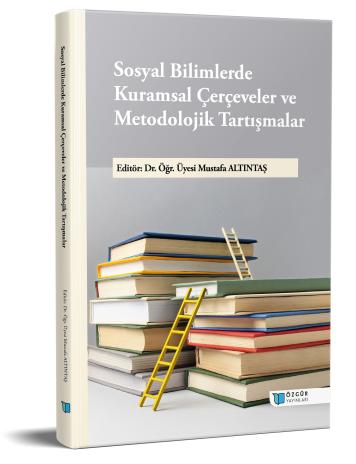
Disaster Management and Response Strategies in Türkiye
Chapter from the book:
Altıntaş,
M.
(ed.)
2025.
Theoretical Frameworks And Methodological Debates In The Social Sciences.
Synopsis
Türkiye’s geographical, geological, and climatic characteristics expose the country to recurrent and diverse natural hazards such as earthquakes, floods, landslides, wildfires, and droughts. These conditions have rendered disaster management not only a matter of public safety but also a multidimensional domain encompassing legal, social, economic, and governance perspectives. This study critically examines the evolution and current state of disaster management and response strategies in Türkiye, with a focus on the transition from crisis-oriented approaches toward integrated risk management frameworks. Central to this transformation has been the establishment of the Disaster and Emergency Management Authority (AFAD) in 2009 and the adoption of the Türkiye Disaster Response Plan (TAMP), both of which signify a systemic shift from fragmented institutional structures to a holistic national system.
The research situates Türkiye’s disaster management policies within the broader theoretical foundations of the disaster cycle highlighting their interdependence and feedback mechanisms. Special attention is given to the alignment of Türkiye’s national frameworks with international models, particularly the Sendai Framework for Disaster Risk Reduction (2015–2030) and the Incident Command System (ICS). The study also investigates the strategic role of complementary policy instruments such as the National Earthquake Strategy and Action Plan (UDSEP-2023) and the Türkiye Disaster Risk Reduction Plan (TARAP), emphasizing their integration into sustainable development, urban planning, and climate adaptation agendas.
Methodologically, the study was conducted using a qualitative document analysis approach. The documents included in the analysis were selected based on criteria of content relevance and currency. As inclusion criteria, legal regulations directly related to disaster management (e.g., Law No. 5902, Law No. 7269), institutional reports (AFAD, TAMP, UDSEP, TARAP), and international policy frameworks (Sendai Framework, ICS model) were identified. As exclusion criteria, documents that were repetitive, outdated, or limited to technical implementation guidelines were omitted from the scope. The selected documents were coded through thematic content analysis according to predefined themes-risk reduction, preparedness, response, recovery, governance, and integration. The coding scheme was independently developed by two researchers, and inter-coder reliability was ensured through comparative evaluation. Through this method, Türkiye’s disaster governance capacity was examined comprehensively across structural, functional, and normative dimensions.

